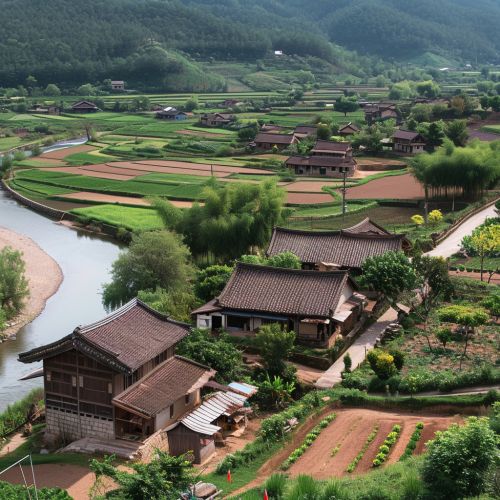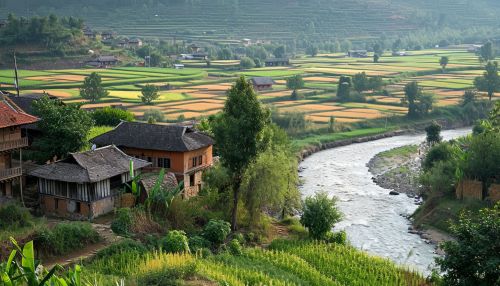Cultural landscapes
Definition and Concept
A cultural landscape is a geographic area that has been shaped by human activity, including the built environment and patterns of land use. The concept is rooted in landscape architecture, cultural geography, and heritage conservation, and it recognizes the interplay between culture and nature in shaping our surroundings. Cultural landscapes can range from thousands of acres of rural lands to homesteads with small front yards. They can be man-made expressions of visual and spatial relationships that include grand estates, farmlands, public gardens and parks, college campuses, cemeteries, scenic highways, and industrial sites.


Types of Cultural Landscapes
The National Park Service in the United States classifies cultural landscapes into four general types: historic designed landscapes, historic vernacular landscapes, historic sites, and ethnographic landscapes.
Historic Designed Landscapes
These are landscapes that were consciously designed or laid out by a landscape architect, master gardener, architect, or horticulturist according to design principles, or by an amateur gardener working in a recognized style or tradition. The landscape may be associated with a significant person(s), trend, or event in landscape architecture; or it may illustrate an important development in the theory and practice of landscape architecture. Aesthetic values play a significant role in designed landscapes.
Historic Vernacular Landscapes
These are landscapes that evolved through use by the people whose activities or occupancy shaped them. Through social or cultural attitudes of an individual, family, or community, the landscape reflects the physical, biological, and cultural character of everyday lives. Function plays a significant role in vernacular landscapes.
Historic Sites
These are landscapes significant for their association with a historic event, activity, or person. Often, they are memorial landscapes.
Ethnographic Landscapes
These are landscapes containing a variety of natural and cultural resources that associated people define as heritage resources. Examples are contemporary settlements, sacred religious sites, and massive geological structures. Small plant communities, animals, subsistence, and ceremonial grounds are often components.
Cultural Landscape Studies
Cultural landscape studies focus on the complex relationships between people and their environment, and the processes by which landscapes are formed, perceived, and altered. The field draws on multiple disciplines, including anthropology, archaeology, geography, history, and landscape architecture. It also intersects with other areas of study, such as environmental studies, urban planning, and heritage conservation.
Cultural Landscapes and Heritage Conservation
Cultural landscapes are increasingly recognized as important resources for heritage conservation. They embody a wealth of cultural and historical values, and their conservation can contribute to social cohesion, economic development, and sustainable use of the environment. The United Nations Educational, Scientific and Cultural Organization (UNESCO) includes cultural landscapes in its World Heritage Sites list, recognizing their outstanding universal value.
Challenges in Cultural Landscape Conservation
Despite their recognized value, cultural landscapes face numerous challenges. These include threats from development, climate change, and changes in land use. Conservation efforts must balance the need to preserve cultural and historical values with the needs of living communities and sustainable use of resources.
